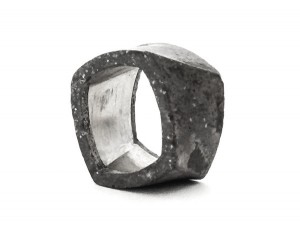I like to inspire laughs when I talk about design. They not only confirm that my listeners are listening to what I am saying, but that they are also getting what I am saying. And that’s especially gratifying because my usual subject, industrial design — that is, the design of useable, though not always useful, objects — isn’t inherently funny.
I recently encouraged especially big laughs. First, I introduced myself to a local cultural group as the director of the Museum of California Design, which organizes design exhibitions and presents an annual design award, often to creators whose work has been under-recognized. Then, I said that this year we would be honoring Frank Gehry.
It took a while for the guffaws to die down.
That shouldn’t have surprised me. In case you haven’t noticed, this is not only the Year of the Sheep, it is also the Year of the Gehry: first the triumph of his Fondation Vuitton building in Paris, then the opening of the superb Gehry architecture retrospective at LACMA, followed by the release of his ambitious designs for the Los Angeles River, the Children’s Institute in Watts, and a major retail/residential complex on the Sunset Strip in West Hollywood. Lately it has seemed like all Gehry, all the time.
Yet, strange as it may seem, when I said “under-recognized” and “Gehry” in the same sentence, I was being neither cute nor arch. Although Frank Gehry has been deservedly recognized for his architecture, he has not received similar attention for his product designs, produced over the same period of time. That’s puzzling, because many of those products contain or are made of unexpected materials, materials that impart new vitality to the object’s form in much the same way his building materials animate the forms of his structures.
As I researched Gehry’s products for our exhibition,“Frank Gehry: 40 Years of Product Design 1972 to 2012,” I was stunned to discover that it would be the first-ever survey of his products. That revelation has given me the impetus to expand the show and travel it to several museums.
Of course, the exhibition includes Gehry’s well-known corrugated paper chair in the Easy Edges line which, in addition, includes a wiggly ottoman, a sober dinner table, stacking side tables and the sculptural Contour Chair. But that was just the beginning of four decades to come.

Photo courtesy Vitra. Lender: JF Chen
Then there were the several lines of jewelry he produced for Tiffany & Co., among them Torque, Axis, Equus, Fold, Orchid, Flux, Wave and Fish, more than one hundred different pieces in all, including bracelets, earrings, cufflinks, pendants, necklaces, rings and bangles. And in a stunning variety of materials: pernambuco wood, cacholong stone, onyx, jade, black gold, white gold, brown-banded agate, sterling silver, lapis lazuli, titanium, diamonds.

And his lighting: the looming Clouds, and the extravagant Fish lamps whose installation requirements preclude their being exhibited here. But we do have his twisted glass vodka bottle for Wyborowa in Poland, an elegant fish-themed tea kettle for Alessi in Italy and a sterling silver and cement ring for Tiffany & Co. Yes, cement!
What this body of commercial design work reveals is that Gehry is clearly in the same mold as one of his early officemates on 4th St. in Santa Monica, Gere Kavanaugh, who, when asked not long ago what she liked to design, said: “Anything I can get my hands on.” I, for one, am looking forward to the versatile Mr. Gehry getting his hands on many more things.
More information
Museum of California Design
Museum of California Design’s 12th Annual Award Benefit and Auction honoring Frank Gehry, Sunday, October 25, 2:30 PM
Top image: Frank Gehry: Club chair, designed 2004, mfg. Heller, after 2010. Photo: courtesy Heller.
Lender: Museum of California Design (gift of Heller).
